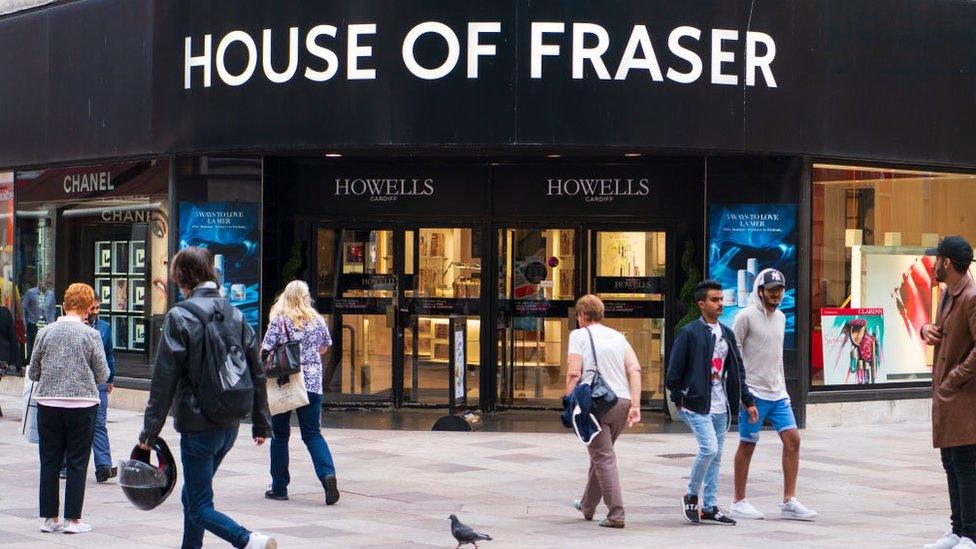House of Fraser: Harrods of the High Street or fraying at the seams?
- Published
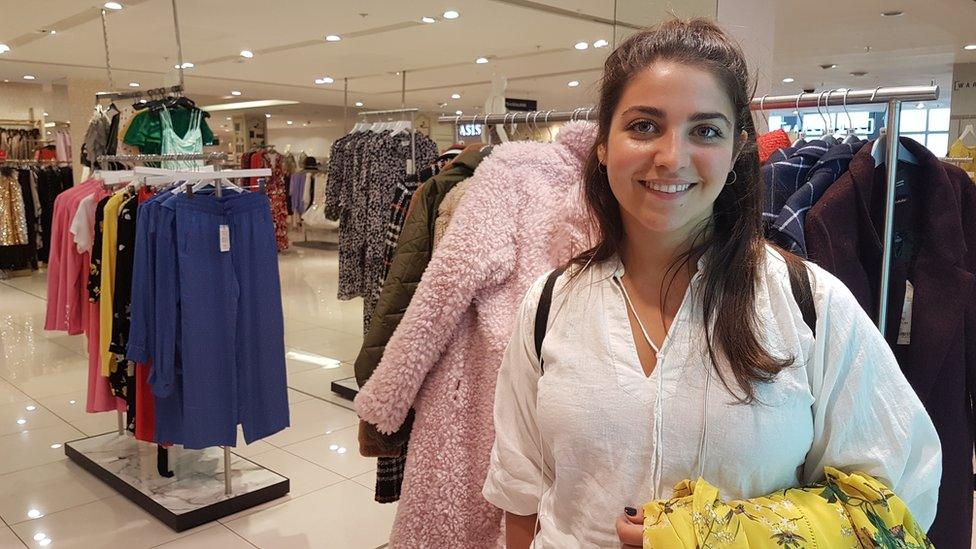
Georgia Cobden saw the sales signs and decided to browse the rails at the central London House of Fraser
Georgia Cobden is about to start a new job in PR and just popped into House of Fraser on Oxford Street because she knows they have a Whistles concession.
At 25, Georgia is just the sort of customer troubled retailer House of Fraser needs to attract to turn around its fortunes amid what the chain's owner, Mike Ashley, has called "unbelievably bad" times for retailers.
Georgia says she and her friends love the range of products in the beauty department, and now she has had a look she's impressed with what's on offer in fashion too.
"I would shop here again. I feel they choose their brands quite carefully, that they're quite vigilant about which ones they let in," she says. She has found two dresses to try on, one blue with white spots from Hobbs, and a yellow bird-and-flower print one from Oasis.
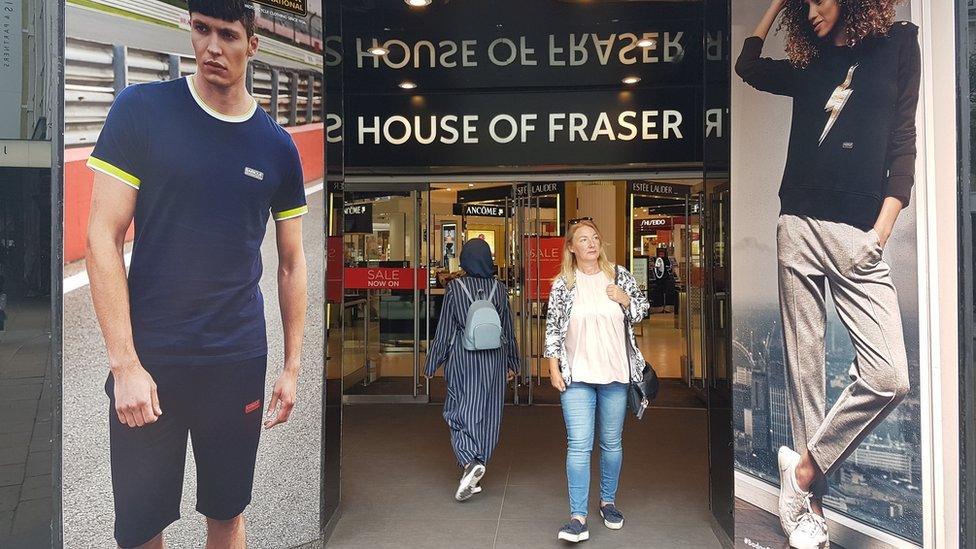
That perception of House of Fraser as home to upmarket, high-quality brands, chimes nicely with the promise made by Mr Ashley when his Sports Direct group bought the chain out of administration almost a year ago. At that point it was on the brink of insolvency, but Mr Ashley pledged to turn it into the "Harrods of the High Street".
But this week Sports Direct said it was delaying its financial results partly due to uncertainty over House of Fraser's financial performance, prompting retail analyst Nick Bubb to label the chain "clearly a disaster area".
While it waits for those results to be published, the group can't provide more details of its plans. But the strategy so far may not be good news for shoppers like Georgia, since it has started to mix things up when it comes to the brands on offer, introducing Sports Direct-owned labels like Everlast socks, Lonsdale and Puma.
Some high-end brands are already deserting. The highest profile amongst them is Chanel, which has removed several of its front-of-store beauty concessions. Here in the central London store its absence is barely noticeable among the other high-end names like Lancome and Estee Lauder.
But while I'm looking round I'm also on the phone to Kate Hardcastle, founder of Insight with Passion, who is browsing a House of Fraser 200 miles away in the centre of Leeds. The retail expert says the shelves at what was the Chanel stall there are just standing empty of stock, with the lights off.
"It looks really bad," Kate says. Beauty drives a lot of footfall in department stores, which is why you're usually greeted by the perfume and cosmetic counter at the main entrance. But another concession has a taped off area too, she says.
"I saw something I never thought I'd see in a 'Harrods of the High Street': Brut aftershave at two for £8," says Kate. "Very Superdrug." It's not a brand she thinks works for House of Fraser.
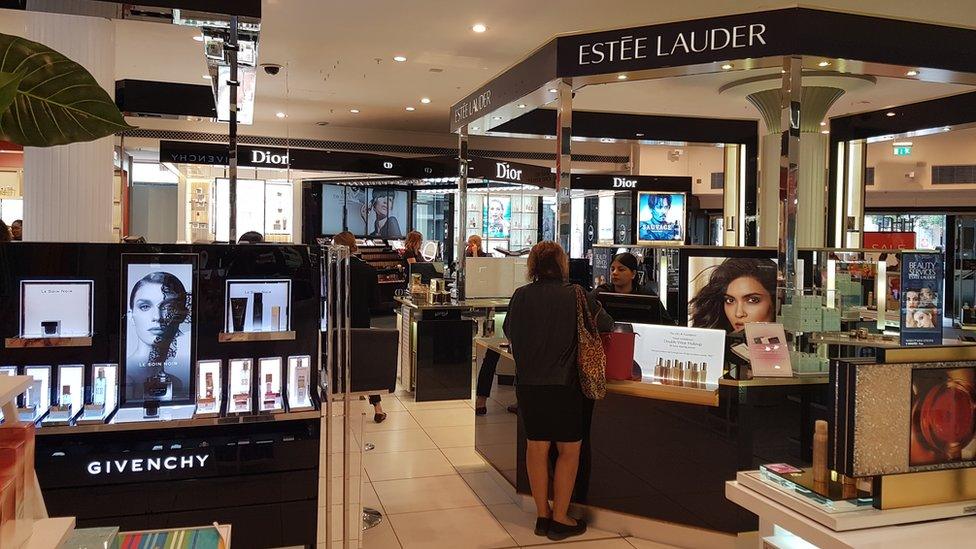
Chanel is no longer running concessions in House of Fraser, though other big brands remain
Earlier in the year, the Sports Direct-owned lingerie brand Agent Provocateur was introduced into several stores, prompting outrage over its "semi-pornographic" advertising images. It didn't sit well with some customers and is the kind of change that may be putting some off.
Where I am in the Oxford Street store shoppers are milling around, though only around half the number that are in John Lewis next door, or in Debenhams on the store's other flank. But Kate says she's arrived in the men's fashion department in Leeds and it is completely empty.
The entire store in Leeds feels "sad", she says. The cafe has been closed and there's no sign of a replacement, the toilets are "absolutely disgraceful" and "there are racks and racks and racks of trainers".
House of Fraser won its original loyal clientele by being a "house of brands" retailer. Before online shopping took off it gave customers access to brands such as Ted Baker and Mulberry even if they didn't live near their flagship, big city stores. It had a luxury feel, with plenty of space around the products on display and a calm, ordered atmosphere.
She thinks Mike Ashley's approach risks squandering that.
"There's no softly, softly about it. These brands are disrupting and not in a good way," says Kate.
"To the left of me is a huge Phase Eight department, mother-of-the bride outfits and very formal classical clothing rails with matching accessories."
But on her right, she describes a less well-known brand, Miss Attire, selling £30 dresses. "The merchandise is all bunched up on the rail. It looks like a market stall."
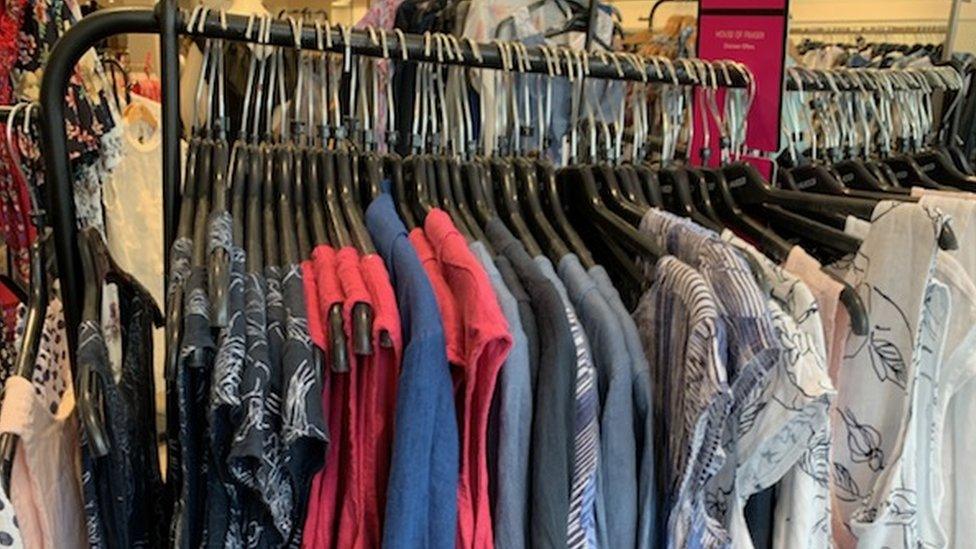
In the Leeds store clothes are crammed onto the rail
Some of these brands may appeal to younger consumers, who tend to avoid House of Fraser these days, but they could easily alienate the chain's traditional customer base, she thinks.
At places in the Oxford Street store the racks of sportswear are crowded and poorly lit. But Kate says in the Leeds branch there are stacks of sports goods on every floor, not only in menswear where they are a good fit, but in womenswear, and homeware.
"I didn't get the feeling that the business in Leeds had any idea what it's going to look like in future," she says.
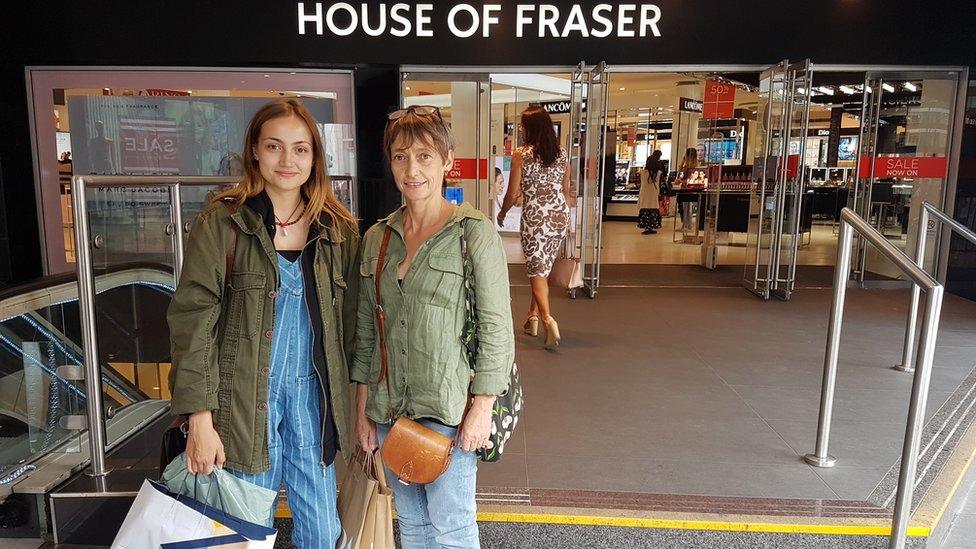
Anouska and her mother Sarah were both impressed with the range at House of Fraser
But there may also be, as Mr Ashley has previously suggested, a "fantastic opportunity" to revive the business. There has been talk of spinning some shops off under a more upmarket "Frasers" brand.
The older shoppers browsing the rails in London seem happy with what they're finding. One middle aged man tells me he buys all his shirts at House of Fraser. He and his wife like the fact they can find something other people won't be wearing.
Moreover 19-year-old Anouska Brunsdon, a singer-songwriter, has just visited with her mother and bought a pair of "chunky boots" to perform in.
She thought the shoe department was "amazing", another stamp of approval from the younger generation that suggests there is an underlying potential there to be tapped if it is managed the right way.
- Published15 July 2019
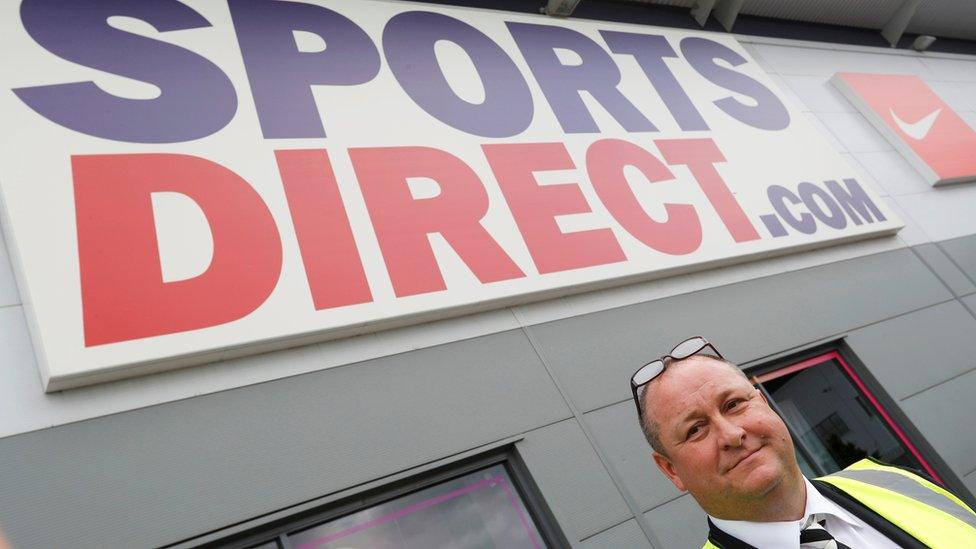
- Published14 February 2019
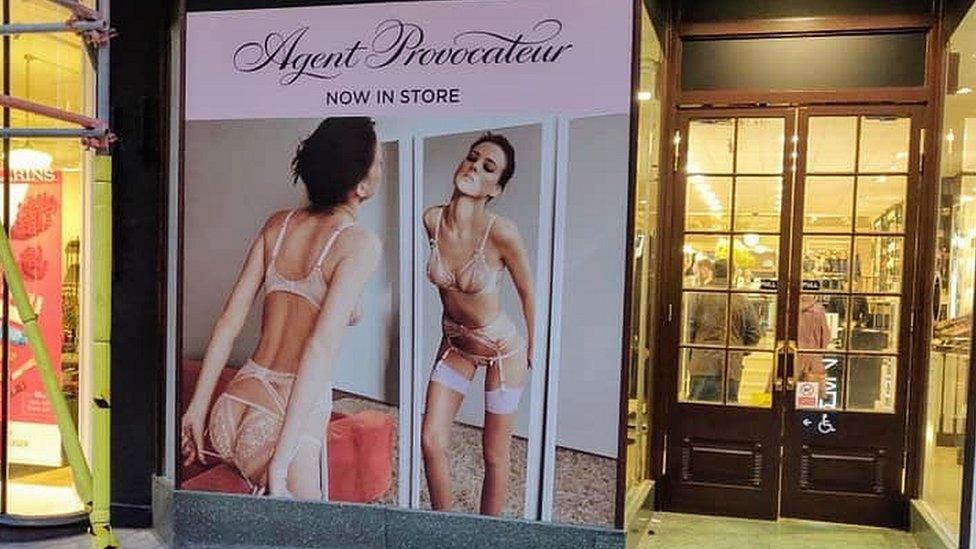
- Published10 April 2019
- Published10 August 2018
